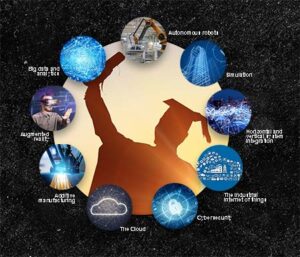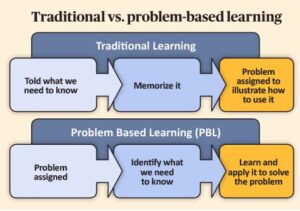If education doesn’t solve a problem, then it is a problem. If the educated do not solve a problem, then they are the problems.
Ernest Yeboha

The expansion-based approach adopted by the Higher Education Commission of Pakistan in recent years has concluded in an aggrandised number of universities. The enrolment of students in universities has surged in the past couple of decades, culminating in increased numbers of graduates, tons of research papers, and a plethora of Masters and PhD dissertations. Though this sounds favourable for an underdeveloped economy and we may conclude that more academic activity is leading towards knowledge-based growth, yet the low-quality education is bringing no solutions and no value to society. Upon graduation, as they step out of the university, large numbers of graduates remain out of the job market and many of them face unemployability. It is not difficult to spot that the graduates are not prepared to develop solutions or to make a societal impact. They cannot identify their key competency or speciality or which problems of the real world their research can solve.
Industry representatives often complain about the inadequate skill level of the graduates. On the other hand, people with higher education (Masters and PhD) do not consider the manufacturing industry appropriate to be their potential employer. As a result, industry lacks knowledge driven innovative solutions, the share of manufacturing value in GDP is on a continuous decline since the year 2000, and the nation bears a load of nearly 3,000 unemployed PhD graduates.
Various educationists have highlighted the dilemma of the widened gap between discovery and its application. A fundamental reason to this discombobulating phenomenon is the conventional approach (remembering and reproducing settled facts, principles and theories) of learning adopted by our higher education institutions. We never tried to shift towards problem-based learning (focused on exploring a problem and developing solutions for it) that was adopted by industrialised nations decades ago. Since the students are not trained to solve real-world problems, upon graduation they lack the ability to develop solutions to the challenges being faced by the world around them and hence fail to make a societal impact.
Presently, activities in relation to industry-academia collaboration are limited to occasional seminars organised by universities where people from industry are invited to talk to the students. Such occasional interaction between students and industry representatives can produce insufficient results. Industrial internships are also part of the curriculum in some programmes (especially in engineering), but they remain limited to fulfilment of an academic formality. The research methodology adopted by Masters students often remains limited to a random survey on a hypothesis and making a conclusion. If we observe the titles and abstracts of a handful of randomly picked masters theses, they fail to convey any message to the reader.
Another problem is the faculty that often has no industrial exposure. University teachers often are the ones who opted to stay away from industry, yet they teach the students how to work in industry. It is necessary, particularly for the professors in engineering, business, I.T., and technical subjects, to have a few years of industrial exposure. Even if we talk about the programme of industrial engineering, which is meant fundamentally to train students to manage and run industrial enterprises, the situation remains the same. Most professors have never worked for a day in any industry, yet they teach industrial operations and advise students how to effectively run them.
The students follow an entitlement approach to higher education. Instead of a desire to seek knowledge, the aim of the students is largely to attain an entitlement such as job-related promotion, salary increments, bonuses, social influence etc.
Manufacturing was, is, and shall remain the foundation of a strong economy in the world, and no other sector can replace it. The manufacturing sector has demonstrated a high potential to ensure sustainable societies with high standards of living by creating better jobs and increasing national GDPs. It has proven to be a major driver of knowledge building and carries the highest multiplier effect on any economy. However, the value added by Pakistan’s manufacturing sector is 12 percent of GDP. What we export is cotton-textiles, far from exporting any industrial machines or electromechanical equipment. But we cannot continue with this approach for long. Economic progress, social wellbeing, and lowering the export to import ratio requires that sooner or later Pakistan will have to strengthen its manufacturing landscape. The countries that focused on the manufacturing sector a century ago, today enjoy a high income. In those countries, a couple of friends can spend the amount of money on a weekend evening, that a household in non-industrialised countries spends on food for the entire month. Furthermore, the industrialised nations had initiated Industry 4.0 (referring to the fourth industrial revolution) development projects years ago. As these projects evolve and the results materialise, the income inequality between low- and high-income countries will further increase.
One step in bridging the gap between discovery and application is to set up national initiatives that facilitate university-industry collaboration. We can learn from such initiatives in industrially developed economies. An example is the Manufacturing Academy of Denmark (MADE), which is a Danish national innovation and research platform for the manufacturing industry in Denmark. Denmark is a country of 5.6 million with a strong industrial landscape. Some of the world’s leading companies are headquartered in Denmark such as Danfoss, LEGO, Mærsk, Vestas, Novo Nordisk etc. MADE supports and strengthens the manufacturing industry in Denmark through the implementation of state-of-the-art manufacturing technology via applied industrial research projects, various innovation activities and educational initiatives. Other examples are the Smart Industry programme of Sweden, and Industry 4.0 of Germany, Manufacturing Technologies Association of U.K., SIMTECH (Singapore Institute of Manufacturing Technology) of Singapore and so on.

The author of the article had the opportunity to do an industrial PhD sponsored by MADE, Denmark. In such an industry sponsored PhD, the candidate is hired by a manufacturing company and performs research on a given problem. In parallel, the candidate is enrolled at a university to complete the academic requirements of a PhD programme. By going through a rigorous journey of applied research for three to four years, the graduate gets well versed with commercial requirements of his/her research and gets prepared to produce research that has a business value, and innovation aspect to compete in the market.
The collaboration between industry and university must be a continuous structured process at various levels and layers:
Universities must shift towards problem-based learning in their education. Students must be pushed to contact and collaborate with the local industry. Aligned with course objectives, students must be asked to take industrial problems as course projects throughout the academic programme. The university must also manage a pool of industrial collaborators who offer their industrial problems as projects for students. If a student takes a problem from industry as an academic project, there must be an assigned industry supervisor in the project in parallel with the academic advisor. As the industry devotes its time and resources to collaborate on a project with the student or university, the feedback from the industry supervisor must be fairly acknowledged, contributing to the total final grade in the course.
As the students collaborate with local industry, emphasis must be given to small and medium sized enterprises (SMEs), which often remain neglected in industry-academia linkage initiatives, as well as to large companies.
Ultimately, it is the responsibility of the students to focus on building their specialisations and developing state-of-the-art market relevant skills. They must try to become experts of a skill that is commercially viable, needed by commercial enterprises, and applicable to solve some real-world challenges. Students can do this when they have a better understanding of the market and its challenges.
The local industry must take these collaboration initiatives as their social responsibility and acknowledge that the collaboration is not just “giving,” but it is mutually beneficial or a win-win situation. Investing time to advise students will benefit the company by bringing in new and innovative ideas resulting in business growth. The student is also being prepared to be a potential future employee.
Large companies must also be invited to offer applied PhD and Postdoctoral positions in collaboration with universities.
These initiatives can evolve a knowledge driven market. If, at any point in the future, Pakistan wishes to stand in the league of upper income countries, the best thing it can do now is to strengthen its manufacturing sector. The people of the Indian sub-continent had missed the train of the industrial revolution in the mid 18th century and could not become part of the journey of industrial growth. Today, the world is at the verge of the next industrial revolution and this time those left behind will be hit even harder. To mitigate the possible adverse consequences, we must act now.

The writer is an industrial scientist, working as an expert for Robotics & Automation in wind turbine manufacturing in Denmark.

